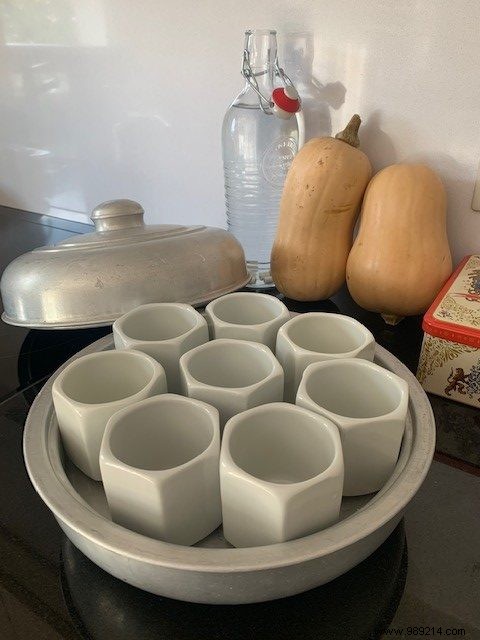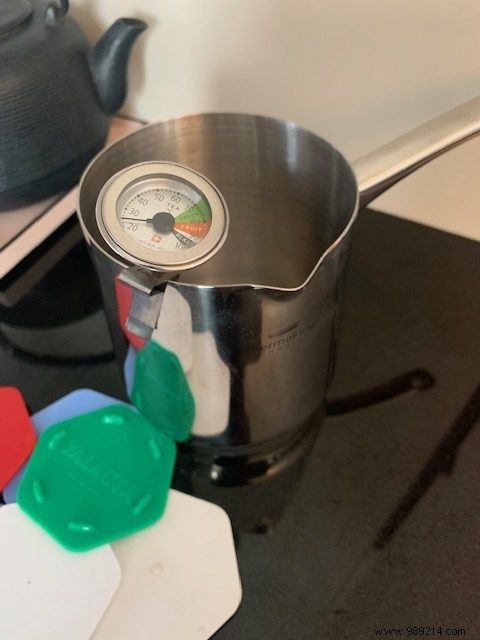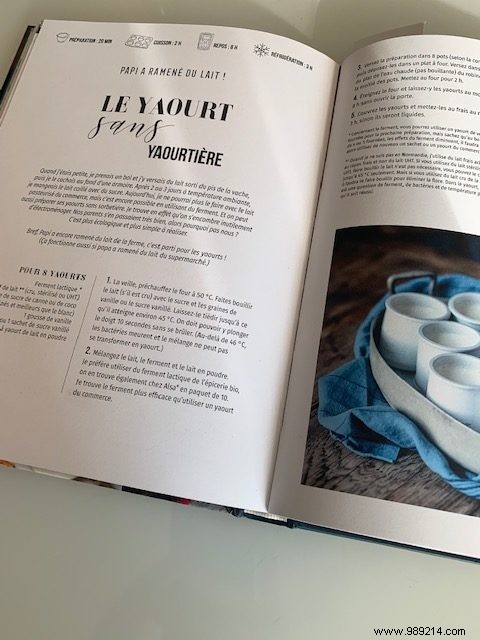Slowly but surely, the desire to make our own yogurts crept in:this is obviously part of our approach "towards less waste". And it's better, there's really only milk in our yoghurts and the taste is delicious!
I talked about it several times on Instagram, I even showed a little on video what I was doing. As many of you asked me for more info, I decided to put everything on the blog. TADIN:
On our side, we still equipped ourselves (thanks to the GOOD CORNER) with a vintage yogurt maker Yalacta isothermal which therefore makes it possible to cook yogurts, without electricity, by bringing them to a descending temperature. While "modern" electric yogurt makers do not allow this principle since you cannot choose the temperature.

We read a lot of recipes, sites, advice, before deciding and it also took us a few weeks to find a yogurt maker at a reasonable price with a large capacity (namely 8 pots), because casually, we we are 4 and the teenager eats it morning and evening…
So I now make yogurts twice a week (weekends and Wednesdays) and it's going well after a few hiccups at the start, I can't hide it from you.
Ingredients :1 liter of milk (as little skimmed as possible)
3/4 teaspoon of yogurt from the previous batch (so remember to always put one elsewhere in the fridge otherwise it will be devoured and you will find yourself very stupid to make it again)
For the first time, use a ferment (Yalacta) found in pharmacies and some organic stores. Amazon too (but it is clearly expensive there for once… I find it at 5 or 6 € at La Vie Claire)
Material :1 insulated yogurt maker but it can also work with a dish for the oven (it will be filled with boiling water around the pots)
1 kitchen thermometer (it's really easier than with your finger)
1 container to prepare the ferment
1 pan to heat the milk
1 whisk to stir (incredible, isn't it?)

Step 1 :gently heat the milk (here I boil it systematically but normally we only do it if it is raw milk)
At the same time, put the ferment (or the spoonfuls of yogurt) in a container and mix with a tiny bit of lukewarm milk. In practice, I start reheating the milk that comes out of the fridge, I wait a bit, then I pour some into my firm and I put the rest back on the plate.
Step 2 :once the milk has risen (without overflowing hum hum), I keep it between 80 and 90 degrees for 20 minutes. I set my plate at level 5 and I'm off to do something else.
Step 3 :it beeps, I get out of the fire and wait for the temperature to drop to about 55 degrees (between 50 and 60). There, I stay not too far but now I know that it takes about 10 minutes.
At the same time, I turn on my oven at 50 degrees and as soon as it is up to temperature I turn it off.
Step 4 :the milk is at the right temperature. It is first poured slowly, stirring well, into the container of the ferment.
Step 5 :I pour everything into my jars and bake (the oven is off eh) for 3 hours
For the moment, I'm sticking to nature, because then we each put what we like in it:honey especially for the teenager, maple syrup or chestnut cream for the little one and me!!
In Minireyve's wonderful book, I was happy to find a homemade yogurt recipe without a yogurt maker too! I felt less alone!

We will just take a commercial ferment if, for holidays for example, we stop making batches for about ten days.
That's it, no need for a yogurt maker, sincerely, it's quick and efficient that way, even if, in fact, we fumbled a bit at the beginning, now it's become routine and I'm delighted.